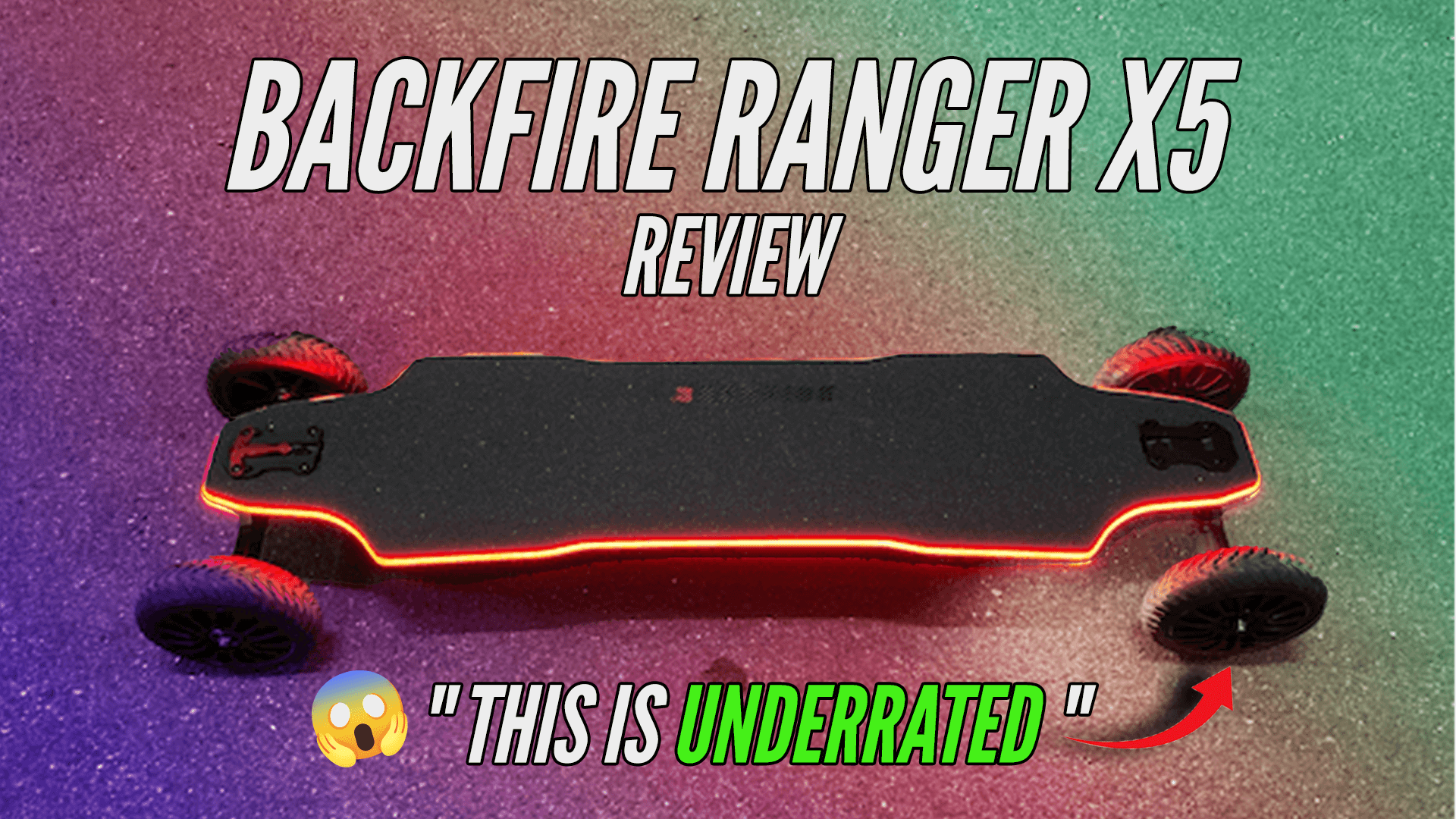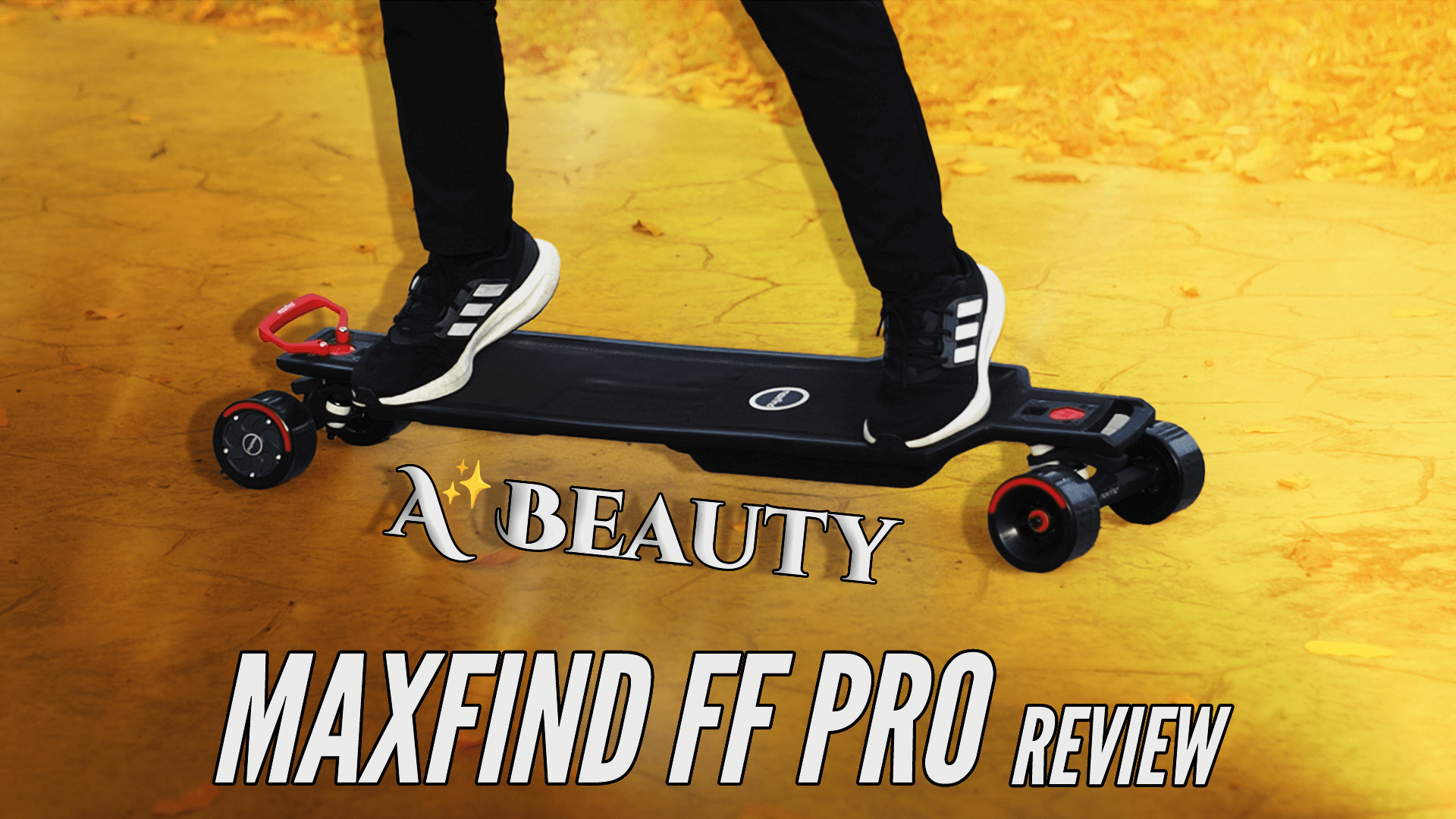Meepoboard is the OG affordable electric skateboard brand that has shaped today’s eskate scene, so we were quite puzzled that it took them until now to introduce their affordable belt-driven electric longboard. But finally, in November 2024, they released the Meepo Go and the Meepo Edge, a pair of belt-driven electric longboards and shortboards priced at just over $500.
Today, we’ll be looking at the Meepo Go, the longboard, and as usual, let’s dive into the specs.


Meepo Go Specs:
| Price | $519 |
| Battery | 12S2P 345Wh battery using 21700 cells |
| Controller | JK ESC |
| Top Speed | 28 Mph (45 Kph) |
| Range | 20 miles (32 km) |
| Deck | Bamboo and Fibreglass Composite |
| Motor | Dual 1500w 4230 Belt Motors |
Deck – Bamboo and Fiberglass Composite:


Starting with the deck, the Meepo Go features a simple design with a handle cut-out. Unfortunately, this downgrades the board, giving it a slightly cheap vibe, but it’s undoubtedly a practical feature.
The deck is made of Bamboo and Fiberglass composite, which isn’t as flexible as the material implied. It only has a mild flex and a rather subtle concave.
Battery – 12S2P 345Wh battery using 21700 cells:


Next, for the battery, Meepo Go is powered by a 12S2P 345Wh battery using 21700 cells which is the same ER battery pack used in the $499 Meepo V5 ER.
It has a marketed range of 20 miles (32 km), much more than the 10 miles (16km) we expected from a typical $400 entry-level electric skateboard and on par with the range of other $500 boards. As always, the actual range depends on rider weight, terrain, and how hard you ride.
ESC and Remote – JK ESC


The ESC is where it gets interesting. Most e-skates run on either Hobbywing or LingYi ESCs, but Meepo decided to introduce a new competitor: the JK ESC. The ex-chief engineer of Hobbywing developed this ESC, so it’s no surprise it behaves very similarly to Hobbywing ESCs.
The JK ESC includes a smart power-on feature, where turning on the remote powers up the board, and comes with four-speed modes. However, the top two speed modes are locked for the first 6 miles (10 km) of riding — a mandatory “practice mode” with no bypass. This is annoying, and we hope they eventually drop this “feature” in the future.
The remote also takes some getting used to, as it operates a bit differently from other ESCs. For instance, switching speed modes requires double-pressing the power button, which isn’t our preferred method but isn’t a major issue either.
Motor – Dual 1500w 4230 Belt Motors


As for the motors, the Meepo Go is equipped with dual 1500W 4230 belt motors which are marketed at a top speed of 28 mph (45 km/h), which is pretty standard for boards in this price range. And we have no problem hitting 28mph with our board.
Trucks And Wheels – 7” 45 degree Reverse Kingpin Shredder Trucks With 90mm Wheels


The board uses Meepo’s 7-inch 45-degree reverse kingpin Shredder trucks with 100A bushings. We are familiar with Shredder trucks, as Meepo puts them in most of their boards. They are good and give a good balance between stability and maneuverability.
The wheels are standard 90mm with a 76A durometer and we have nothing much to say about them.
Specs Summary of the Meepo Go



We initially thought Meepo would aim to make the Meepo Go the most affordable belt-driven electric longboard, but we were wrong. Instead of stripping down the specs to the bare minimum and creating a belt-driven version of the $359 Meepo V5, the Meepo Go is based on the $499 Meepo V5 ER, featuring the same upgraded 21700 battery.
The rest of the components are familiar—while not particularly exciting, they have proven to be reliable and contribute to a solid riding experience which we will dive into next.
Riding Experience on the Meepo Go


When it comes to riding, the Meepo Go is a practical and straightforward board.
Let’s first talk about the new guy in town, the JK ESC. This JK ESC actually feels indistinguishable from Hobbywing ESCs, which means perfectly smooth acceleration and perfectly smooth braking. Everybody loves Hobbywing ESC, and hence, everybody will love this JK ESC. New riders will definitely find this an easy board to learn.
The second focus we have for this board would be these belt motors. And they are alright. They deliver strong torque—better than any hub—but nothing to write home about. For those who are considering between hub drives and belt drives, definitely get belt drives unless you are allergic to belt maintenance. Belt drives have better torque, better battery efficiency when going uphill, and a smoother ride on rough roads. When all else is equal, there is little reason to pick a hub drive over belts.
Belt drives also kick off from a stop stronger, which is the best feeling on an electric skateboard, and they get to the top speed faster.
On Meepo Go, we reached its top speed of 28 mph (45 km/h) easily, but staying there is a bit sketchy, and we blame it on the lack of a pronounced deck concave. We felt less sure about where our feet were.
Otherwise, the Shredder trucks did their job well. They are stable and have a good return to center. Shredder trucks have a pretty good balance between maneuverability and stability. Carving is smooth and fun, but it would have been more fun had the deck been more flexible, but that’s just my personal preference.
Verdict of the Meepo Go



Overall, what you get from the Meepo Go is reflected well by the vibe of its name — simple and utilitarian.
It’s not the cheapest belt-driven electric longboard out there, though Meepo could’ve achieved that by using a smaller 12S2P 18650 battery and pricing it at $450. However, instead of cutting corners and potentially leaving some riders dissatisfied, the Meepo Go comes with a setup that packs enough power and battery to meet the needs of even the most demanding riders.
While not at all fancy and maybe a little bit boring, it’s an inoffensive board and a safe buy for anyone looking for an entry-level belt-driven electric longboard.
If you are interested in buying the Meepo, be sure to check out our affiliate discount link here and use code: “ESKATEHQ” to receive $5 off during checkout.
It will help you get a small monetary discount and help us out too. On top of that, you’ll be tagged as an Electric Skateboard HQ customer and probably be treated better. Cheers!







































































































